Attributeerror: Module Datetime Has No Attribute Strptime
Overview of the AttributeError – Module datetime has no attribute ‘strptime’:
In Python, the datetime module is a part of the standard library that allows manipulation and representation of dates and times. It provides various classes and methods to work with dates and times.
One of the commonly used methods in the datetime module is ‘strptime’, which stands for “string parse time.” This method is used to convert a string representation of a date and time into a datetime object.
However, sometimes while working with the datetime module, you may encounter an AttributeError with the message “module datetime has no attribute strptime.” This error occurs when the ‘strptime’ method is not recognized or available within the datetime module.
Explanation of the AttributeError in Python:
An AttributeError in Python is raised when you try to access an attribute or method of an object that does not exist or is not accessible. In the case of the datetime module, the attribute ‘strptime’ is not present, leading to the AttributeError.
Introduction to the datetime module in Python and its functionalities:
The datetime module in Python provides classes for manipulating dates and times. It includes classes such as ‘datetime’, ‘date’, ‘time’, ‘timedelta’, ‘timezone’, etc., which allow operations like creating date and time objects, calculating differences between dates, extracting specific components from a datetime object, etc.
Understanding the ‘strptime’ method and its purpose:
The ‘strptime’ method in the datetime module is used to convert a string representation of a date and time into a datetime object. It takes two parameters: the string to be converted and a format string that specifies the expected format of the input string.
The format string consists of various format codes, such as ‘%Y’ for the four-digit year, ‘%m’ for the month, ‘%d’ for the day, ‘%H’ for the hour, ‘%M’ for the minute, ‘%S’ for the second, etc. By using these format codes, the ‘strptime’ method can parse the input string and create a corresponding datetime object.
Possible causes for the AttributeError when using ‘strptime’:
There are a few possible causes for the AttributeError when trying to use the ‘strptime’ method in the datetime module:
1. Importing datetime incorrectly: Ensure that you have imported the datetime module correctly in your Python script or program. The correct way to import the datetime module is: ‘import datetime’.
2. Conflicting module or variable names: Check for any conflicting module or variable names in your code that may be overriding the ‘strptime’ method. Make sure you are not using any custom modules or variables with the same name.
3. Older version of Python: The ‘strptime’ method was introduced in Python 2.3. If you are using an older version of Python, it may not have this method. Consider upgrading to a newer version.
Troubleshooting steps to resolve the AttributeError:
If you encounter the AttributeError “module datetime has no attribute strptime,” here are some troubleshooting steps you can follow:
1. Verify the import statement: Double-check the import statement for the datetime module. Make sure it is imported correctly as ‘import datetime’.
2. Check for conflicting names: Inspect your code for any conflicting module or variable names that might be shadowing the ‘strptime’ method. Rename or remove any conflicting names.
3. Check Python version: Check your Python version to ensure that it supports the ‘strptime’ method. You can use the ‘python –version’ command in your terminal to check the version.
4. Upgrade Python: If you are using an older version of Python that does not have the ‘strptime’ method, consider upgrading to a newer version.
Alternative solutions and workarounds for formatting datetime strings:
If you are unable to use the ‘strptime’ method due to the AttributeError or for any other reason, there are alternative solutions and workarounds available to format datetime strings:
1. Using the dateutil module: The dateutil module provides a powerful parser with the ‘parse’ function, which can handle a wide range of date and time formats. You can install it using ‘pip install python-dateutil’ and then use it as: ‘from dateutil.parser import parse’.
2. Using regular expressions: If you have a specific datetime format and are comfortable with regular expressions, you can extract the individual components of the datetime string using regex patterns and then construct a datetime object manually.
Conclusion:
The AttributeError “module datetime has no attribute strptime” typically occurs when the ‘strptime’ method is not recognized or available in the datetime module. This error can be resolved by checking the import statement, avoiding conflicting names, verifying the Python version, and upgrading if necessary.
If you encounter this error, follow the troubleshooting steps provided and consider alternative solutions like the dateutil module or regular expressions for formatting datetime strings. With the datetime module and its various methods, you can efficiently work with dates and times in Python.
FAQs:
Q1. Why am I getting the AttributeError “module datetime has no attribute strptime”?
A1. This error occurs when the ‘strptime’ method is not recognized or available in the datetime module. It can be due to incorrect import statements, conflicting names, or an older version of Python that does not support the method.
Q2. How can I resolve the “module datetime has no attribute strptime” error?
A2. To resolve this error, check your import statement, ensure there are no conflicting names, verify the Python version, and consider upgrading if needed. Alternative solutions include using the dateutil module or regular expressions for datetime formatting.
Q3. Are there any alternative methods to ‘strptime’ for datetime formatting?
A3. Yes, alternative methods include using the ‘parse’ function from the dateutil module or constructing datetime objects manually using regular expressions to extract and arrange the components of the datetime string.
Q4. Can I use the ‘strptime’ method in all versions of Python?
A4. No, the ‘strptime’ method was introduced in Python 2.3. If you are using an older version of Python, it may not have this method. Consider upgrading to a newer version that supports ‘strptime’.
Q5. What is the purpose of the datetime module in Python?
A5. The datetime module in Python allows manipulation and representation of dates and times. It provides classes and methods to work with dates, times, time intervals, time zones, etc., making it easier to perform various operations involving dates and times in Python.
Datetime Module Has No Attribute Strptime
Keywords searched by users: attributeerror: module datetime has no attribute strptime Python print datetime, Strptime Python, Strptime() argument 1 must be str, not datetime datetime, Python datetime add days, Get now time Python, Python get hour from datetime, Get time from datetime Python, Python datetime to timestamp
Categories: Top 32 Attributeerror: Module Datetime Has No Attribute Strptime
See more here: nhanvietluanvan.com
Python Print Datetime
Python is a versatile programming language that offers a wide range of functionalities for developers. One of the key features of Python is its ability to work with date and time data. In this article, we will explore how to print datetime in English using Python, along with some commonly asked questions.
Introduction to datetime module in Python:
Python provides a module called “datetime” that offers various classes and methods to work with date and time values. This module allows us to manipulate, format, and print date and time in different formats, including English.
To begin with, it is necessary to import the “datetime” module in your Python script or interactive shell. You can do this by using the following line of code:
“`python
import datetime
“`
Once the module is imported, you can use its classes and methods to work with datetime values.
Print date and time in English:
Python’s “datetime” module provides a class called “datetime” that represents a specific date and time value. To print the current date and time in English, you can use the “strftime()” method of this class, which stands for “string format time.”
Here’s an example that demonstrates how to print the current date and time in English:
“`python
import datetime
now = datetime.datetime.now()
formatted_time = now.strftime(“%B %d, %Y %I:%M %p”)
print(“Current date and time in English:”, formatted_time)
“`
In the above code, we first import the “datetime” module. Then, we use the “now()” method of the “datetime” class to get the current date and time. Next, we use the “strftime()” method to format the date and time as per our requirements. In this case, we have used the format string “%B %d, %Y %I:%M %p” to display the month name, day, year, hour in 12-hour format, minutes, and AM/PM indicator.
Running this code will display the current date and time in the specified English format.
Formatting options for printing datetime in English:
Python provides various formatting options that can be used with the “strftime()” method to print datetime in English. Some commonly used format codes are:
– %Y: Year with century as a decimal number (e.g., 2022)
– %m: Month as a zero-padded decimal number (e.g., 07)
– %B: Full month name (e.g., July)
– %d: Day of the month as a zero-padded decimal number (e.g., 03)
– %I: Hour (12-hour clock) as a zero-padded decimal number (e.g., 03)
– %M: Minute as a zero-padded decimal number (e.g., 08)
– %p: Either AM or PM
These format codes can be combined in any order to create a datetime format string that suits your requirements. Additionally, you can also include other characters like commas, colons, spaces, and text within the format string to provide better readability.
Frequently Asked Questions (FAQs):
Q1. How do I print a specific date in English using Python?
To print a specific date in English, you need to create a datetime object with the desired date and then use the “strftime()” method to format and print it. Here’s an example:
“`python
import datetime
specific_date = datetime.datetime(2022, 7, 25)
formatted_date = specific_date.strftime(“%B %d, %Y”)
print(“Specific date in English:”, formatted_date)
“`
This code will print the date “July 25, 2022” in English.
Q2. Can I print the day of the week along with the date in English?
Yes, you can print the day of the week along with the date in English. The “strftime()” method allows you to include the format code “%A” to display the full weekday name. Here’s an example:
“`python
import datetime
specific_date = datetime.datetime(2022, 7, 25)
formatted_date = specific_date.strftime(“%A, %B %d, %Y”)
print(“Specific date with weekday in English:”, formatted_date)
“`
This code will print the date “Monday, July 25, 2022” in English.
Q3. How can I convert a datetime string to a datetime object in Python?
To convert a datetime string to a datetime object, you can use the “strptime()” method of the “datetime” class. This method allows you to specify the format of the datetime string using format codes. Here’s an example:
“`python
import datetime
datetime_str = “2022-07-25 14:30”
datetime_obj = datetime.datetime.strptime(datetime_str, “%Y-%m-%d %H:%M”)
print(“Datetime string converted to datetime object:”, datetime_obj)
“`
This code will convert the datetime string “2022-07-25 14:30” to a datetime object.
Conclusion:
Printing datetime values in English using Python is quite straightforward with the help of the “datetime” module. By understanding the usage of the “strftime()” method and its format codes, you can easily customize the output format as per your needs. Whether it’s printing the current date and time or specific dates, Python’s datetime module provides the necessary tools for handling date and time data effectively.
FAQs section is intended to answer some common questions related to the topic.
Strptime Python
Introduction:
Python, being a versatile programming language, offers a wide range of built-in functions and modules that simplify many programming tasks. One such module is datetime, which allows programmers to work with dates and times effortlessly. Within the datetime module, the strptime() method serves as an extremely useful tool for converting string representations of dates and times into datetime objects.
What is strptime()?
The strptime() function is a part of Python’s datetime module and is short for “string parse time.” It takes two parameters: a string representation of a date or time, and a format code that defines the pattern of the string. By utilizing this format code, strptime() scans the given string and extracts the relevant information to create a datetime object.
Format Codes:
To successfully parse the string representation of a date or time, it is crucial to use the correct format codes within the strptime() method. The format codes specify the arrangement and type of each element in the string. For instance, the format %Y represents a four-digit year, %m represents a two-digit month, %d represents a two-digit day, and so on. A comprehensive list of format codes is provided in the Python documentation, making it easy to find the appropriate code for any specific date or time format.
Incorporating strptime() in Python:
To utilize the strptime() method in Python, the datetime module needs to be imported first. This can be accomplished by including the line “from datetime import datetime” at the beginning of your code. Once imported, the strptime() function can be directly accessed using the “datetime.strptime()” syntax. Here is a simple example:
“`python
from datetime import datetime
date_string = “2022/06/10”
date_format = “%Y/%m/%d”
parsed_date = datetime.strptime(date_string, date_format)
print(parsed_date)
“`
In this example, the date_string variable holds the date in string format, while the date_format variable holds the desired format code to parse the string. The output will be a datetime object displaying the date in the desired format.
Common Use Cases:
strptime() is widely utilized for a variety of purposes, some of which include:
1. Reading dates from user input: When accepting dates from users, they are often entered in string format. strptime() makes it easy to convert these strings into a usable datetime object for further calculations or manipulations.
2. Parsing data from files: Many applications require processing data from files that contain date and time information. strptime() helps extract these values and convert them into datetime objects, allowing for efficient handling of the data.
3. Comparing dates or times: By converting different string representations into datetime objects, it becomes simple to compare dates or times and perform operations such as finding the difference between two dates.
4. Filtering data: When working with large datasets, strptime() allows the filtering of data based on specific dates or time intervals. By converting the input into datetime objects, developers can easily filter the data using comparative operators.
Frequently Asked Questions (FAQs):
Q: Does strptime() support time zones?
A: No, the strptime() function does not support time zone information. It assumes the given date or time string is in the local time zone. To work with time zones, the pytz module or the new datetime.timezone class introduced in Python 3.2 can be used.
Q: What happens if the format code does not match the string?
A: If the format code specified in strptime() does not match the format of the given string, a ValueError will be raised. It is vital to ensure the format code is correctly defined to prevent such exceptions.
Q: Can strptime() be used with non-English date formats?
A: Yes, strptime() can be used with non-English date formats. The format codes provided by Python can handle dates in various languages. However, it is necessary to use the appropriate format code for the desired language.
Q: Are there any common mistakes to avoid while using strptime()?
A: One common mistake is mistaking %m (month) with %M (minute). Additionally, certain format codes are case-sensitive, such as %Y (year), %H (hour), and %S (second). Carefully referring to the documentation and double-checking the format codes can help avoid such errors.
Conclusion:
strptime() in Python is a powerful tool for converting date and time strings into date and time objects. By understanding the concept of format codes and their implementation, developers gain the ability to seamlessly convert string representations into datetime objects. This flexibility enables them to perform a wide range of operations with dates and times, making it an essential function for any Python programmer.
Images related to the topic attributeerror: module datetime has no attribute strptime
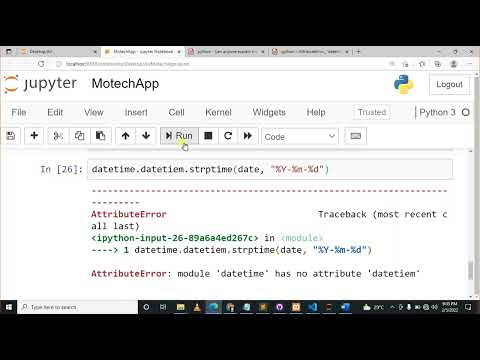
Found 50 images related to attributeerror: module datetime has no attribute strptime theme






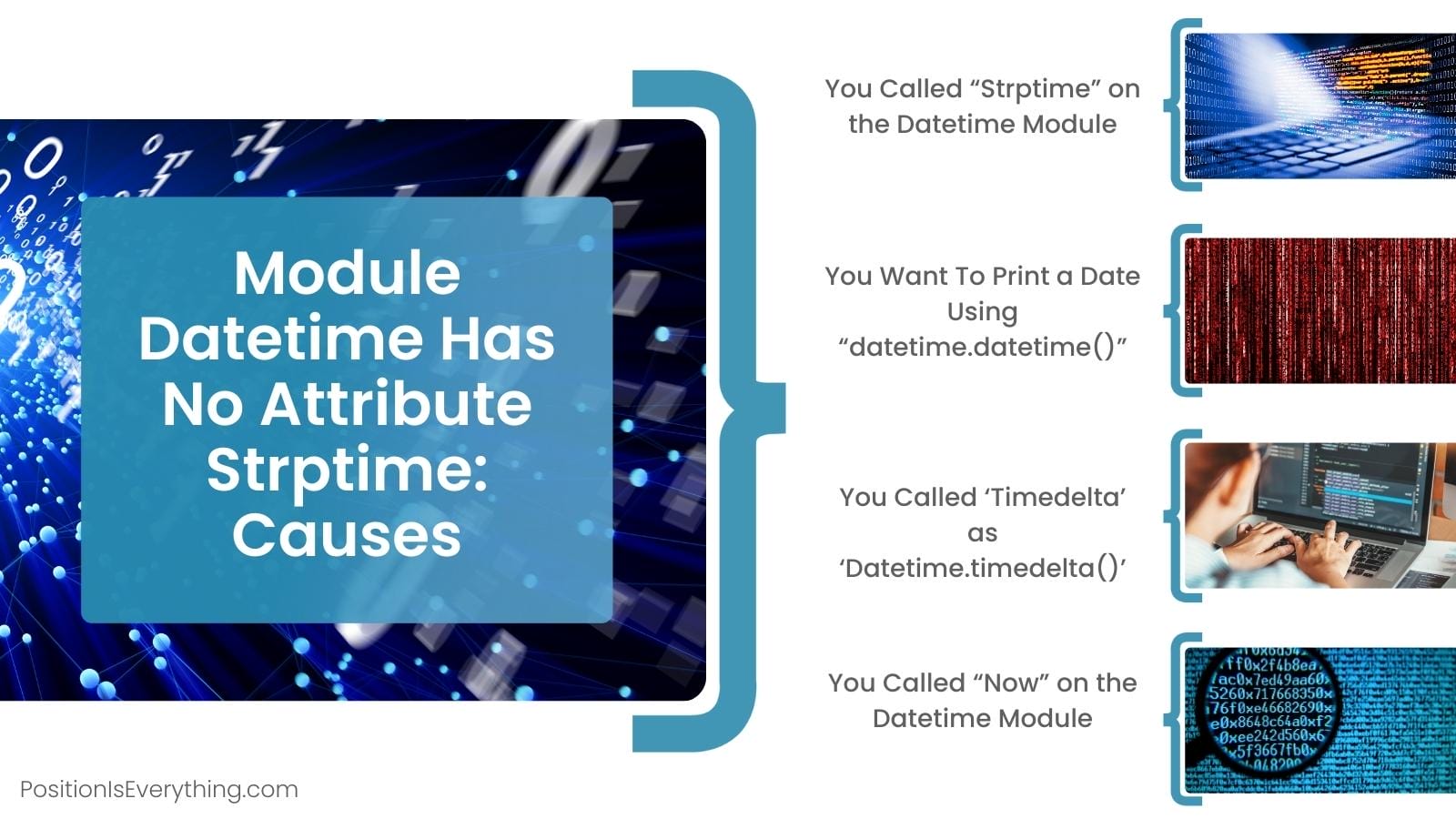


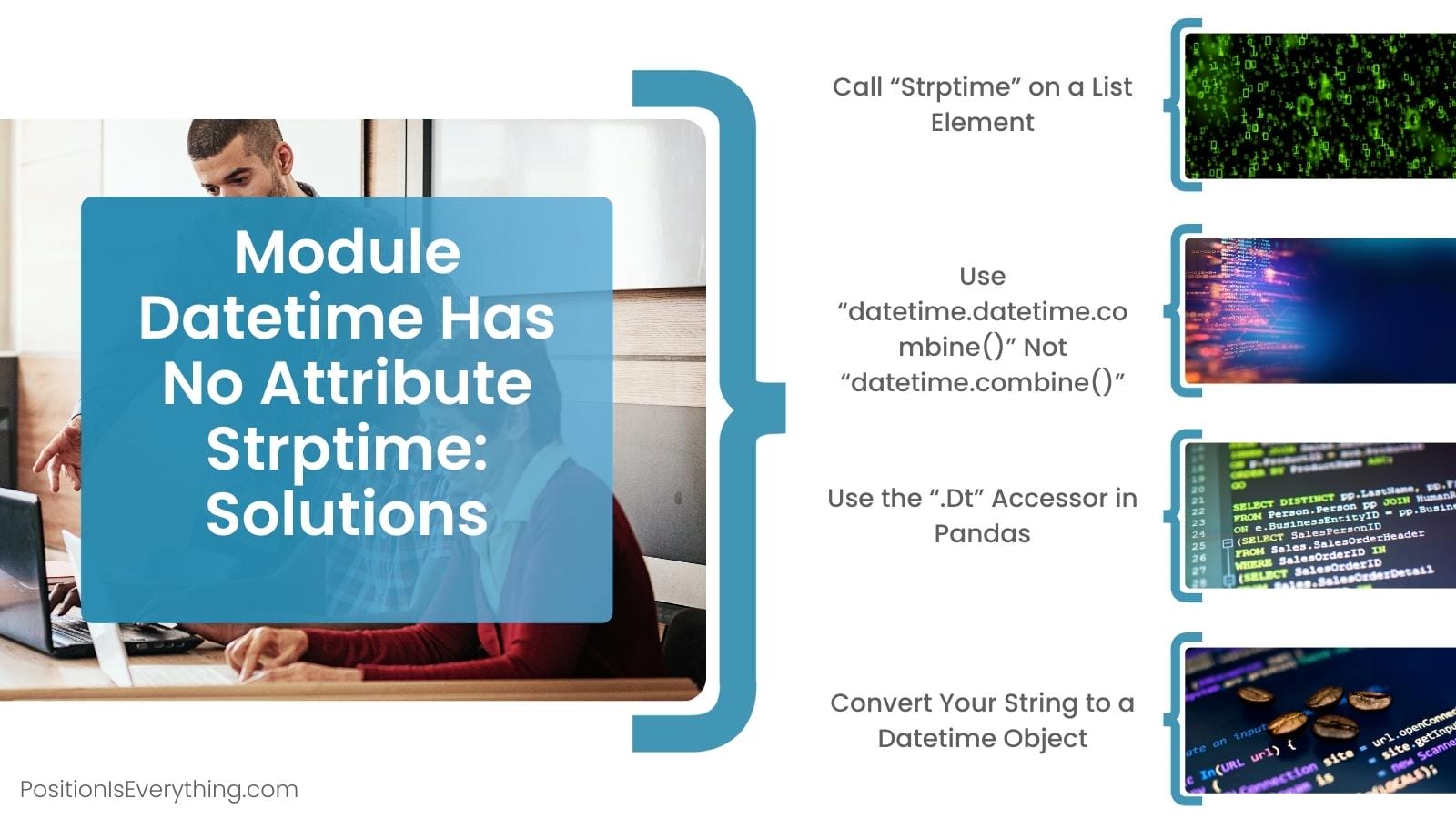




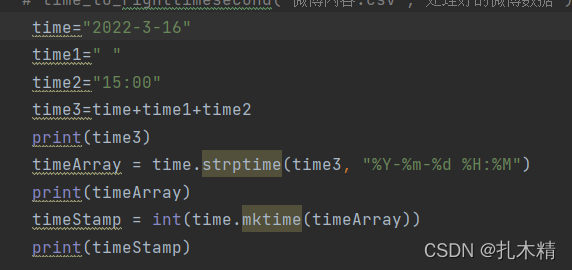





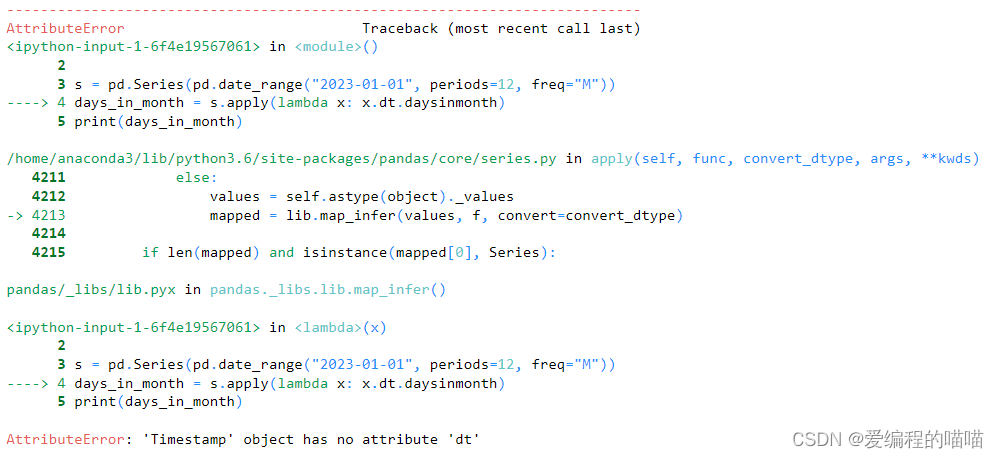

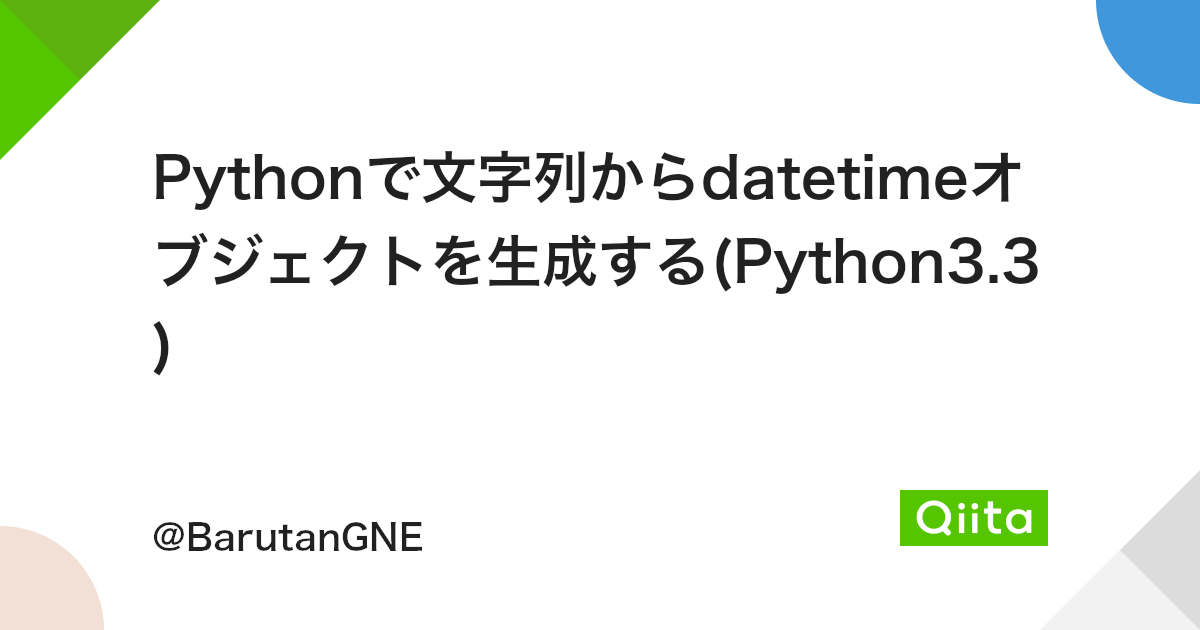

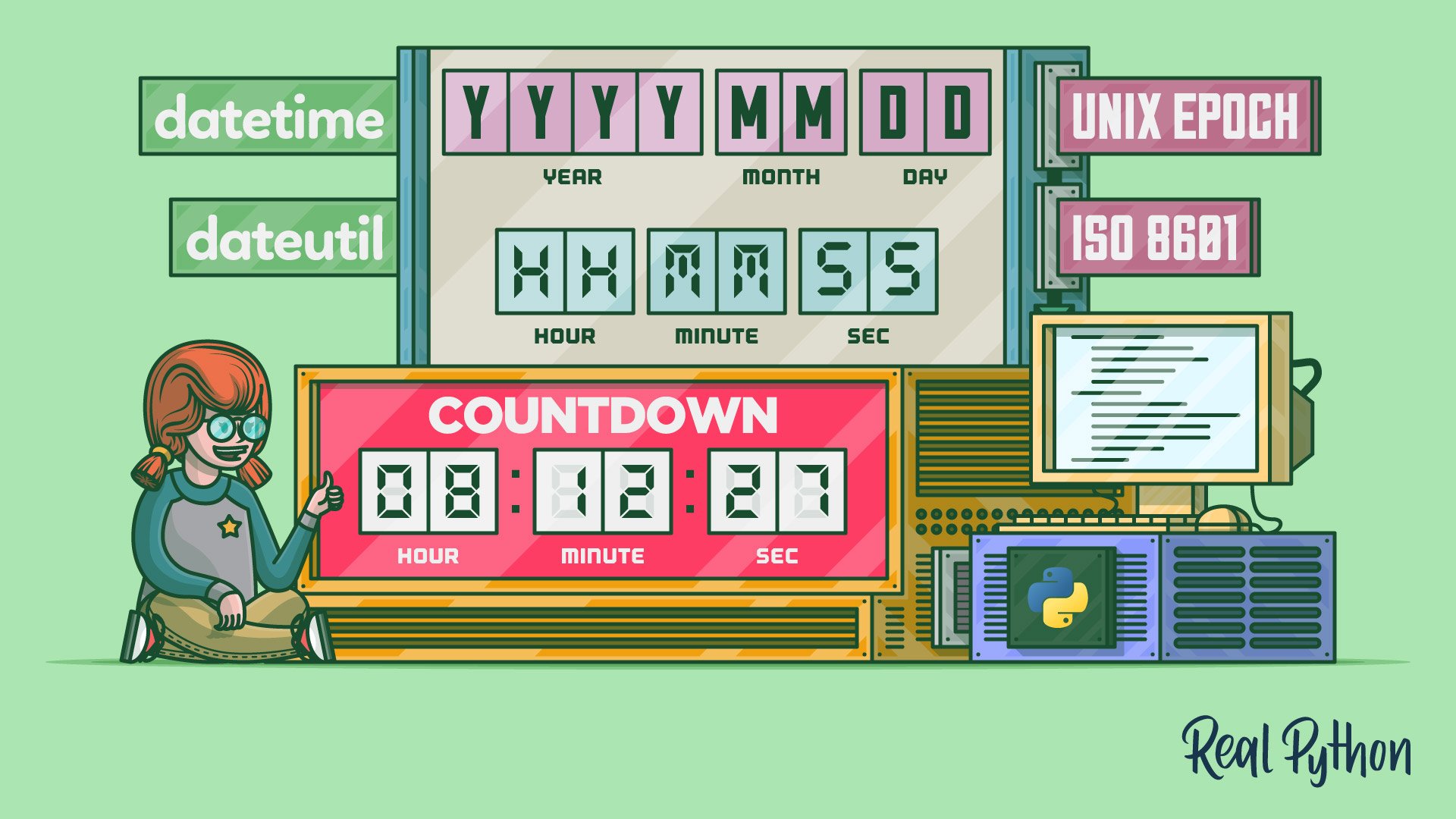







Article link: attributeerror: module datetime has no attribute strptime.
Learn more about the topic attributeerror: module datetime has no attribute strptime.
- AttributeError: ‘datetime’ module has no attribute ‘strptime’
- AttributeError module ‘datetime’ has no attribute ‘strptime’
- module datetime has no attribute strptime ( Solved )
- module ‘datetime’ has no attribute ‘strptime’
- Python AttributeError module ‘DateTime’ has no attribute ‘ …
- module ‘datetime’ has no attribute ‘strptime’
- How to Fix AttributeError: module ‘datetime’ has no attribute …
- Module ‘datetime’ Has No Attribute ‘strptime’ Mean?
- AttributeError: ‘module’ object has no attribute ‘strptime’ …